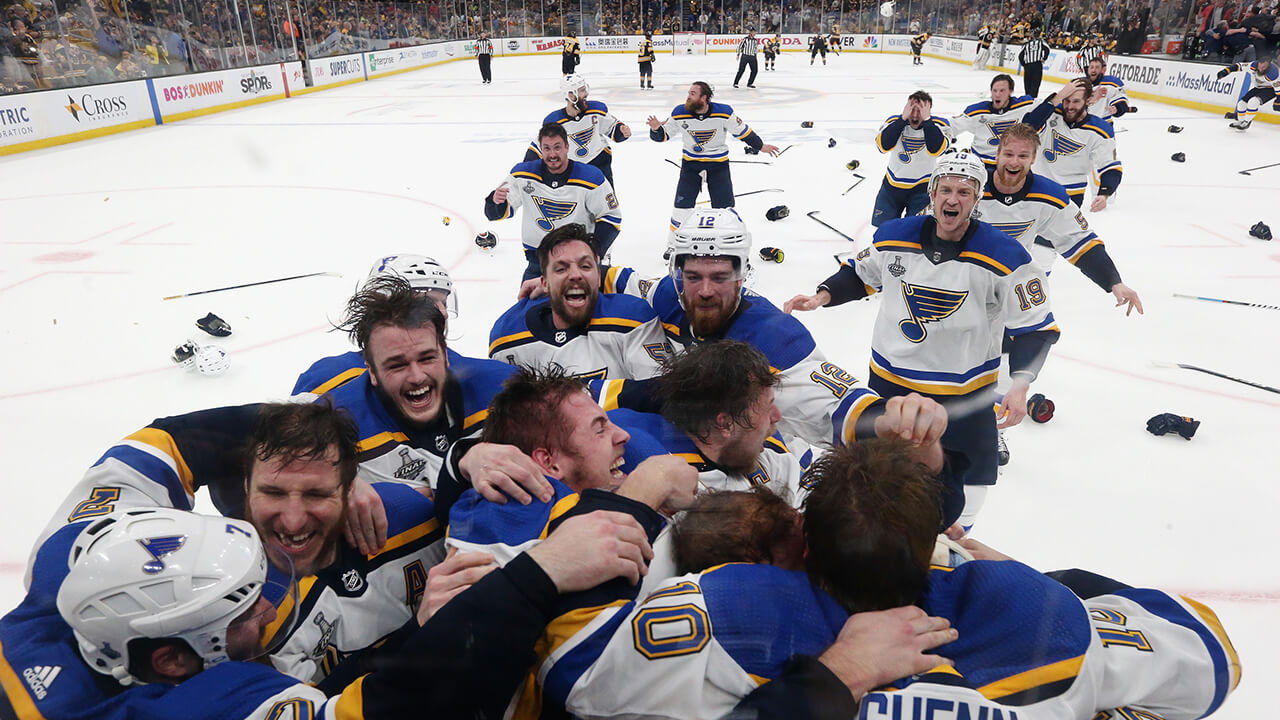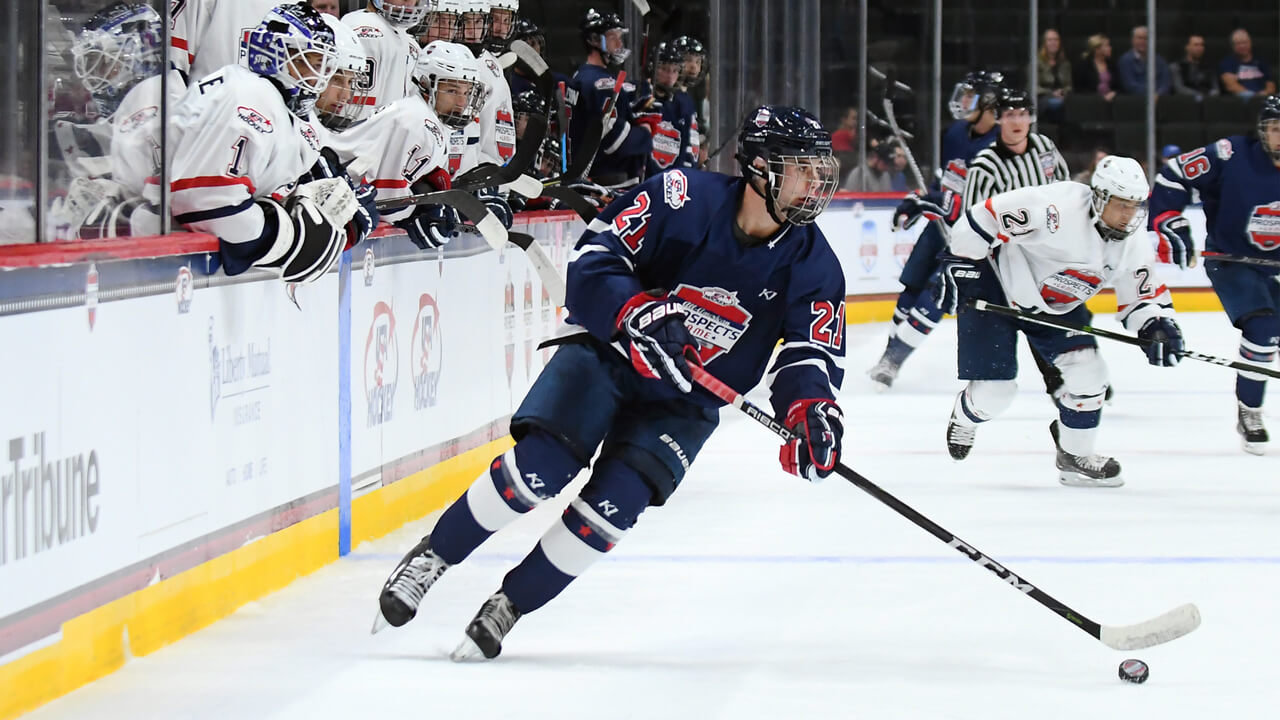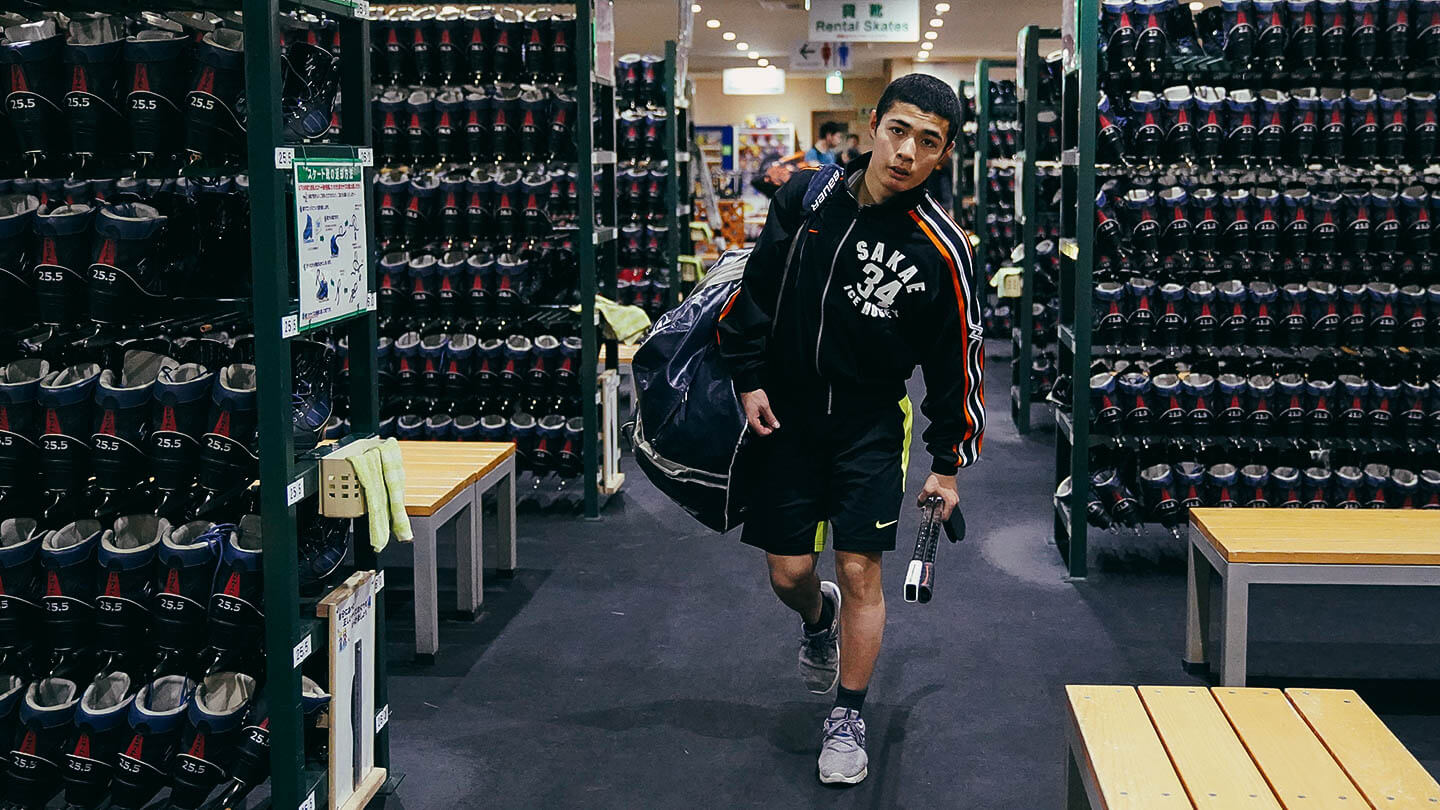Patrick Stefan was sitting on the Dallas Stars bench, still swimming in miserable disbelief and reeling from an all-time gaffe when Marty Turco swung by with a suggestion. Moments earlier, Stefan was on the verge of vanquishing any drama on the night by sweeping a puck into an empty Edmonton Oilers net for a two-goal cushion with about 10 ticks left on the clock. Instead, he had a bobble on the edge of the crease that, in operatic fashion, morphed from an embarrassing-yet-harmless blunder to a lead paragraph in his soon-to-be-written career obituary when the Oilers — in the frantic seconds that followed — charged up ice, snapped off some quick passes and tied the hockey game with two seconds remaining in regulation time.
Ales Hemsky was the Oiler who equalized the contest and, by extension, blew the roof off the building and cued immediate and justifiable hyperbole. “That’s the most ridiculous thing I’ve ever seen,” declared analyst Ray Ferraro — a one-time teammate of Stefan’s — on the Sportsnet broadcast. “Patrik Stefan, you should be embarrassed for what you just did, that does not belong in the National Hockey League.”
Ferraro’s statement surely captured the consensus of anybody watching, excluding those in attendance who were likely too busy losing their minds to process what just happened. And the part about not belonging in the NHL proved eerily prescient because, about six weeks later, Stefan played his last game in ‘The Show.’ As the Stars goalie, though, Turco obviously had a much different perspective. And after a five-minute overtime period solved nothing, the puckstopper was convinced he had the tonic for a sullen Stefan. “I’m sitting in the corner because I’m still [thinking about] what just happened — and he says, ‘You’re going in the shootout,’” Stefan recalls. “I’m like, ‘No f—king way. There’s no chance, I can’t even go out there and skate.’ But, I look back [and think], ‘What a teammate.’”
There’s not a whole lot Stefan can do about the fact his NHL time is essentially bookended by being a first-overall pick and this absurd play that wound up putting a symbolic period of sorts on the fact he never lived up to his initial high billing. It also doesn’t help his cause that, as the top selection 20 years ago in 1999, he unwittingly became the face of what proved to be a historically weak draft class. Stefan, mind you, has neither the time nor appetite for self-pity — he’s far too busy living a new version of satisfying hockey life. There’s just no evidence of it on YouTube. “People have no idea what I’ve been up to,” he says. “They think I’m this guy who missed the empty net. That’s what I’m known for, and this bust of a No. 1 pick. And you hear that left and right. That’s going to be with me forever, because I can’t change that. But I’m certainly not going to be home and crying and feeling sorry for myself.”
Not by a long shot.
Patrik Stefan moves with a slight limp these days, but you get the feeling Hank would have beat him to the front door no matter what. For the family dog, there are a few reasons to be alert on this warm, late-spring day. Even before there was a knock at the door, landscaping tools wailed and hummed around the property, which is located in the leafy Detroit suburb of Birmingham. Still two cakes shy of his 40th birthday, Stefan doesn’t even really notice the tiny hitch in his step. It’s getting addressed in July, when he’s scheduled to have a full-blown hip replacement. Wearing a blue T-shirt and black shorts to go along with his buzzed head and beard, he still looks an enviable form of fit and it’s difficult to believe he played his last pro game in 2007. Like all players — especially the ones who are highly touted in their teens — Stefan hoped he’d be competing until this late-30s juncture of his life.
When he went to Switzerland for the 2007–08 season on the verge of his 27th birthday, it was with an eye to re-establishing his worth as a player after having arthroscopic hip surgery in the summer. A couple years earlier, during the lost NHL season of 2004–05, Stefan had one of his best hockey experiences playing for Ilves in Finland’s top loop, tearing it up on a line with the league’s scoring leader, Steve Kariya. He chose Switzerland and SC Bern for his next European excursion because the league had a good reputation and the country was home to top-notch medical professionals.
But almost from the first puck drop, Stefan knew he didn’t feel right. He played three games before a doctor told him he’d need to perform open surgery on the hip, not with the intention of saving Stefan’s career, but just to keep him mobile long-term. He crashed head-on into the brutal truth that his time on the ice was up. Though he’s relaxed on a beige sectional in his living room, Stefan’s blue eyes have no trouble recreating the pain and panic of that excruciating period. “It was rough for me,” he says, explaining that red tape relating to his medical treatment meant he was stuck by himself in Switzerland for about six weeks because he hadn’t moved his young family across the pond. “The first month, month and a half was pretty tough,” he says. “All I could think of was that I couldn’t play anymore. That was the only thing in my head. ‘It’s over. I’m done.’ I was hoping to play until I’m 40 and get 1,000 games in the NHL, all these things, then all of a sudden [it’s just taken away].”
Eventually, his constantly spinning wheels steered down more productive roads. All Stefan knew for sure is he wasn’t suited to spending the next 50 years having long lunches and playing golf. He began running through the typical second career options for people with his background, the Venn diagram in his mind overlapping on one clear thing. “It had to be hockey,” he says. “I love that sport.”

Stefan’s affection for the game, at least playing it, likely peaked during the heady days when he was skating for the Long Beach Ice Dogs of the old International Hockey League. Stefan — who missed being eligible for the 1998 draft by one day thanks to his Sept. 16, 1980, birthday — came to California from the Czech Republic during the second half of his pre-draft season. He liked the experience and committed to another IHL season during his draft-eligible year. At the time, the league was essentially equivalent to the American Hockey League in terms of skill level and the number of teeth-baring, grown men who were fighting — often literally — for a shot in the NHL. Following in the footsteps of fellow young Europeans like Radek Bonk, Petr Sykora and Sergei Samsonov by choosing the IHL, Stefan performed at a point-per-game clip. However, he also missed large chunks of the year thanks to a pair of serious concussions. “I woke up in the hospital, both times,” he says.
The uncertainty surrounding Stefan’s health — the second concussion ended his season early — added volatility to the top of a draft some people were already dubious on. When Brian Burke, in his first year as the Canucks GM, returned from the World Junior Championship in Manitoba that January, he broke the news to his amateur scouts that he planned to trade Vancouver’s pick. “I hated the first round,” Burke says. “I hated them all!”
The formation of that harsh opinion had a lot to do with the fact Stefan was sidelined for the WJC and that two other heralded prospects — Daniel and Henrik Sedin — really didn’t show Burke much in the face of stiff competition provided by the American and Canadian squads. The pair had actually been on Burke’s radar since the previous summer, when Canucks scout Thomas Gradin began raving about his countrymen, but Burke’s message at the time was: “Even if I loved these guys, how the hell are we going to land the pair of picks necessary to snag both?”
His take on the Sedins flipped in the spring of ’99 at the World Championship in Norway. He started seeing those area passes they made to each other, the kind that put the puck to a spot where nobody else is within 30 feet of it until a ginger Swede materializes from nowhere at top speed. The brothers made no secret of the fact that — even if it seemed a farfetched scenario — they would like to play for the same NHL club and Burke began stating that no team other than Vancouver would be able to fulfill the Sedins’ wish. Turning that statement into something more than hot air, though, required finding some fellow GMs who were ready to horse trade.
What Burke didn’t declare on public record was that the Canucks — who held the third-overall pick — were actively working to completely dominate the top of the draft. “Dave Nonis [Burke’s assistant GM] can vouch for me on this: We tried to get the top three picks,” he says. “We liked Patrik Stefan very much. We tried desperately to pick one, two and three in that draft.”
Though he didn’t get a ton of traction on that front, six days before the draft Burke nabbed the fourth-overall selection from the Chicago Blackhawks, paying what he considered to be the steep price of defenceman Bryan McCabe and Vancouver’s first-rounder in 2000. Then he tried to shake loose the second top-three pick he desperately needed. The first-overall selection belonged to the Tampa Bay Lighting, while the expansion Atlanta Thrashers held No. 2. Twenty-four hours before the draft, Burke’s attempts to get newly appointed Tampa GM Rick Dudley to surrender the first selection were dying on the vine. Dudley told him he was drafting Daniel Sedin and that was that. Burke went to bed Friday night and told his wife at the time that he was going to be fired because he’d just traded McCabe and a first-rounder for Pavel Brendl, the Russian prospect who figured to go at No. 4. It was both Sedins or bust in his mind.
From the first pick to the final whistle, this special podcast episode covers it all.
Per their custom, Burke and Nonis were the first two suits on the draft floor Saturday morning. They fixed their gaze on the entrances, waiting for Dudley to walk through so they could ambush him with one last Godfather offer, ready to lay out as many future picks as it took to strike a deal. When Dudley emerged, he charged right up to Burke and said he would deal the first-overall pick for No. 4 and two more third-rounders. Burke instantly knew he wasn’t the only GM with several balls in the air. “I said [to Dudley], ‘You’ve already traded [No. 4], haven’t you?’” Burke recalls. “And he said, ‘Yep, I traded it to the Rangers.’ And they took Brendl.”
While assistant GMs Nonis and Jay Feaster of Tampa filed the transaction with the league, Burke sauntered up to Thrashers GM Don Waddell — whom he knew coveted Stefan at No. 2 — and asked if he wanted to be the star of the draft. “He said, ‘Watching you run around I have a pretty good f—kin’ idea who’s going to be the star of this draft,’” Burke says with a laugh.
With owner Ted Turner on hand in Boston to see Atlanta make the first selections in franchise history, Burke presented the opportunity for a little pageantry. If Waddell was willing to part with a third-rounder in 2000, Burke would do a ceremonial swap of Picks 1 and 2, granting Atlanta the honour of calling the first name and Burke the single trip to the podium he desired. “I didn’t want to go up twice,” he says. “[We wanted to introduce] them as a pair, like these are the twins — it’s not Henrik and Daniel, these are the twins. It was important to us to get them on the stage [together].”
Burke got his wish, Atlanta got centre stage and Stefan loved every second. “I’m the first pick for them ever,” he says. “It was all very, very exciting. I was pretty fired up.”
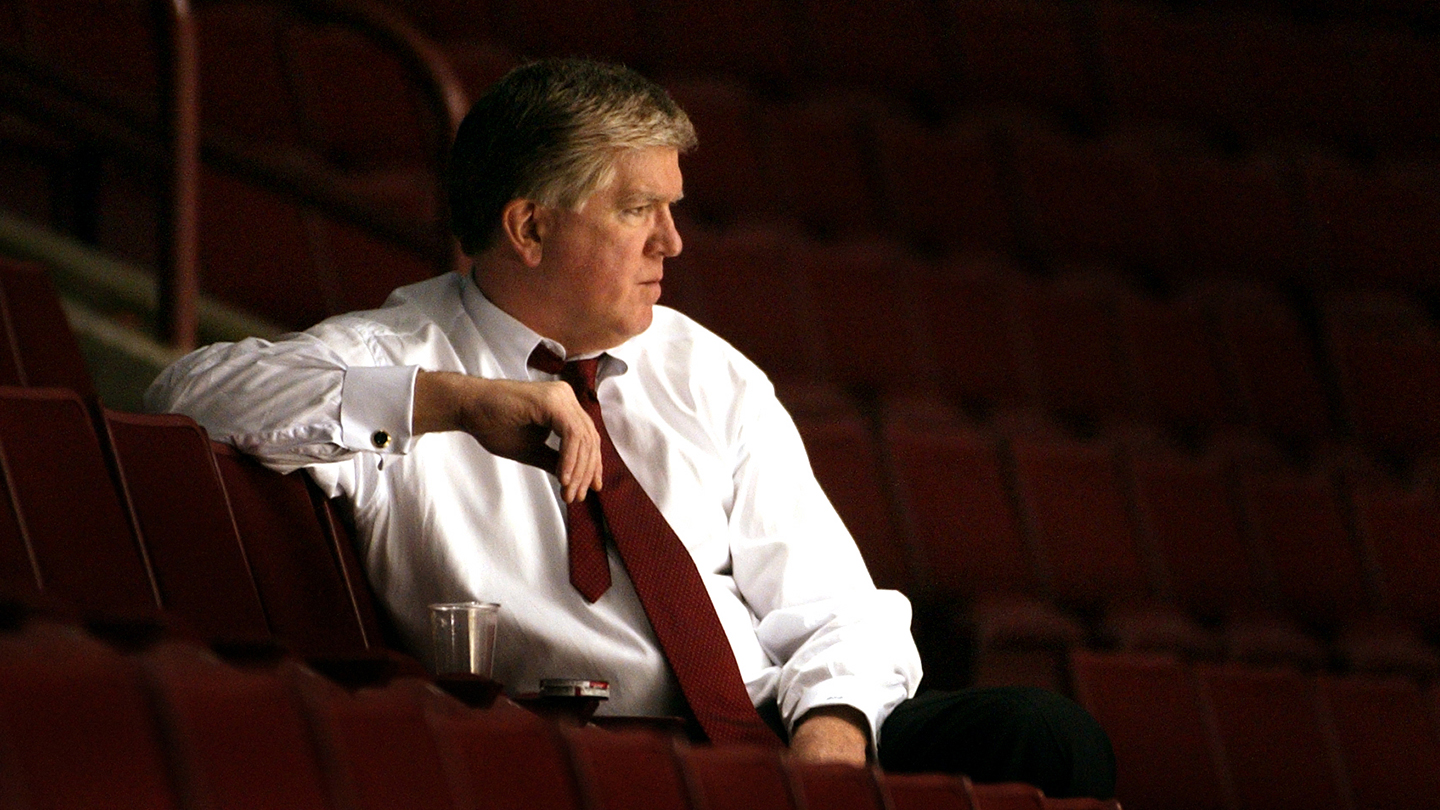
Stefan acknowledges he likes to do things his way. In addition to the beat-you-down travel, one of the reasons he didn’t want to go into scouting was because he had little desire to watch kids play, turn in a report, then let someone else decide what to do. His Czech Republic-based agent, Jaromir Henys, suggested maybe he and Stefan could partner, with the latter being stationed in North America. Stefan met his Californian wife, Carolyn, when he played for Long Beach and the family — James was born in 2003, Wyatt in 2005 — settled in Laguna Beach, south of Los Angeles. Stefan liked the idea of becoming an agent, but shortly after he started down his new path, Henys — who represented many big-time Czech players — passed away from cancer. He pushed on, however, and Stefan’s first client was Michal Neuvirth, a Czech goalie who played major junior for the Plymouth Whalers and now has a decade-long NHL career to his credit. In all, Stefan handles about a dozen players today including pros and amateurs, and he likes the boutique element of his business because it means he can pay personal attention to each guy.
Along the way, Stefan unexpectedly found himself back on the ice as well. His nephew Matthew Akins — the son of Carolyn’s sister, Alyssa Akins — picked up the game, perhaps unsurprisingly given uncle Patrik’s line of work. When Matthew’s Orange County Hockey Club coach was sick one day, Stefan was a reluctant fill in. Coaching was something he never truly considered in retirement. He was the quiet guy in the room, especially in North America where the man wearing a tie spoke a foreign language. He had some great bench bosses through the years and some he found hard to handle when they got hot. “There were lots of times I didn’t know what to say back,” he says. It was those more contentious encounters that coloured Stefan’s view of coaching and it wasn’t until that day about 10 years ago in Orange County, running some old drills, that he tapped into a passion for teaching. “It was just instant love,” he says.
Stefan jumped into the whistle world with both feet, eventually guiding James’s AAA teams full-time and helping out with Wyatt’s squads when he could. He’s a new-school thinker, one who relies heavily on video as a teaching aid and forgives reasonable mistakes made in service of creativity. Whether working with up-and-coming players or counselling clients, Stefan relishes putting his experience to good use. Certainly, his wisdom is hard-earned.
While Stefan holds some great memories from Atlanta, the Thrashers posted just a .311 points percentage through their first three campaigns and the injury bug followed him to the NHL — he sustained a broken jaw, broken ankle and hyper-extended elbow. Atlanta drafted Dany Healtey and Ilya Kovalchuk in consecutive years and they quickly became the team’s go-to young guns. Stefan played fewer than 70 games in two of his first four seasons, and it wasn’t until Year 5 that he skated a full 82 and registered a respectable 40 points. That was the final season before the lost lockout year, when clutch-and-grab hockey still had a death grip on the game. After his great lockout experience in Finland, Stefan crashed back to earth with another sour spin in Georgia.
He welcomed his 2006 trade to Dallas and the chance to start anew in a place littered with ring-wearing vets, where the conversation could be about something other than his status as a disappointing No. 1 pick. “You’re in the locker room and there’s Mike Modano; Jere Lehtinen; Sergei Zubov; Marty Turco,” says Stefan. “I’m like, ‘Holy shit.’ It felt like it was a good fit for me.”
For what it’s worth, Stefan certainly wasn’t the only guy from the 1999 draft struggling to find his way. Aside from the Sedins, the only other big-time star from that year was Henrik Zetterberg, a seventh-round selection of the Detroit Red Wings. Of the 28 first-rounders taken that June, only six managed 500 career NHL games, and the 26 skaters selected combined for 4,579 points (2,111 of which belong to the Sedins). For reference, the 1998 draft — by no means a distinctly strong crew — produced a total of 6,329 points from 25 first-round skaters.
With high-end offence not really part of his repertoire, Stefan’s role diversified in Dallas and he started using his smarts and speed to kill penalties and sometimes shifted to the wing from his natural position of centre. One pro scout who was with the Stars at the time says Stefan’s cerebral approach would be a much better fit for 2019, when we see talent sprinkled throughout the forward trios as opposed to the old setup of two lines built for scoring and two others with spots reserved for bangers and fighters. And the notion that Stefan could be a top-nine guy in the modern landscape doesn’t go far enough for Burke. “I think that’s really uncharitable,” he says. “We had him ahead of the twins. He would have been a good player for a long time and he was a good player for a short time. He didn’t tear it up like some of us thought he would or hoped he would, but he was a good player in our league. It’s too bad he [battled injuries].”
It’s also unfortunate the site of his worst professional moment was the Canadian city of Edmonton as opposed to a hockey hinterland; that the Oilers immediately capitalized on the mistake and that the entire ordeal occurred so close to the end of Stefan’s NHL career, leaving him very little runway to erase the error. “It was not something I’m proud of, for sure,” Stefan says. “Obviously I’ve seen the video a million times, I’ve been reminded [a lot]: ‘How is that possible? [What an] awful player.’ You hear these comments.”

Even the kids he’s coached have asked Stefan about it, and he maintains the only thing he’d do differently is fire the puck on net sooner rather than carry it so close to the cage. His in-the-moment thinking was to keep the puck on his stick until he was in can’t-miss territory. “I’m just going to put it on my backhand and slide it in, [but] it jumps over my stick,” he says. “As soon as that happens, it’s just panic mode. It’s like, ‘Holy shit.’ Then I fell, because it’s panic mode. A lot of people [say], ‘He’s an idiot because now he makes a second mistake [pushing the puck] back up [ice].’ You think I tried to push the puck back into the play? I tried to stop and push it back [toward the open net]. Pretty much every that could go wrong and worse — it just happened in those five or six seconds.”
Dallas actually wound up winning the Jan. 4, 2007, contest in a shootout that — because Turco was the goalie, not the coach — did not include Stefan. Just over a month later, on Feb. 14, Stefan skated in the NHL for the final time. Of course, he can play the “What if… ?” game — the injuries, being the original face of an expansion franchise that, bless its plucky heart, didn’t have the established infrastructure to support a struggling young kid — but he also has no interest in sounding like a whiner and is truly thankful for the time he got in the word’s best league.
“I wish I enjoyed it more,” says Stefan, offering up his only real regret.
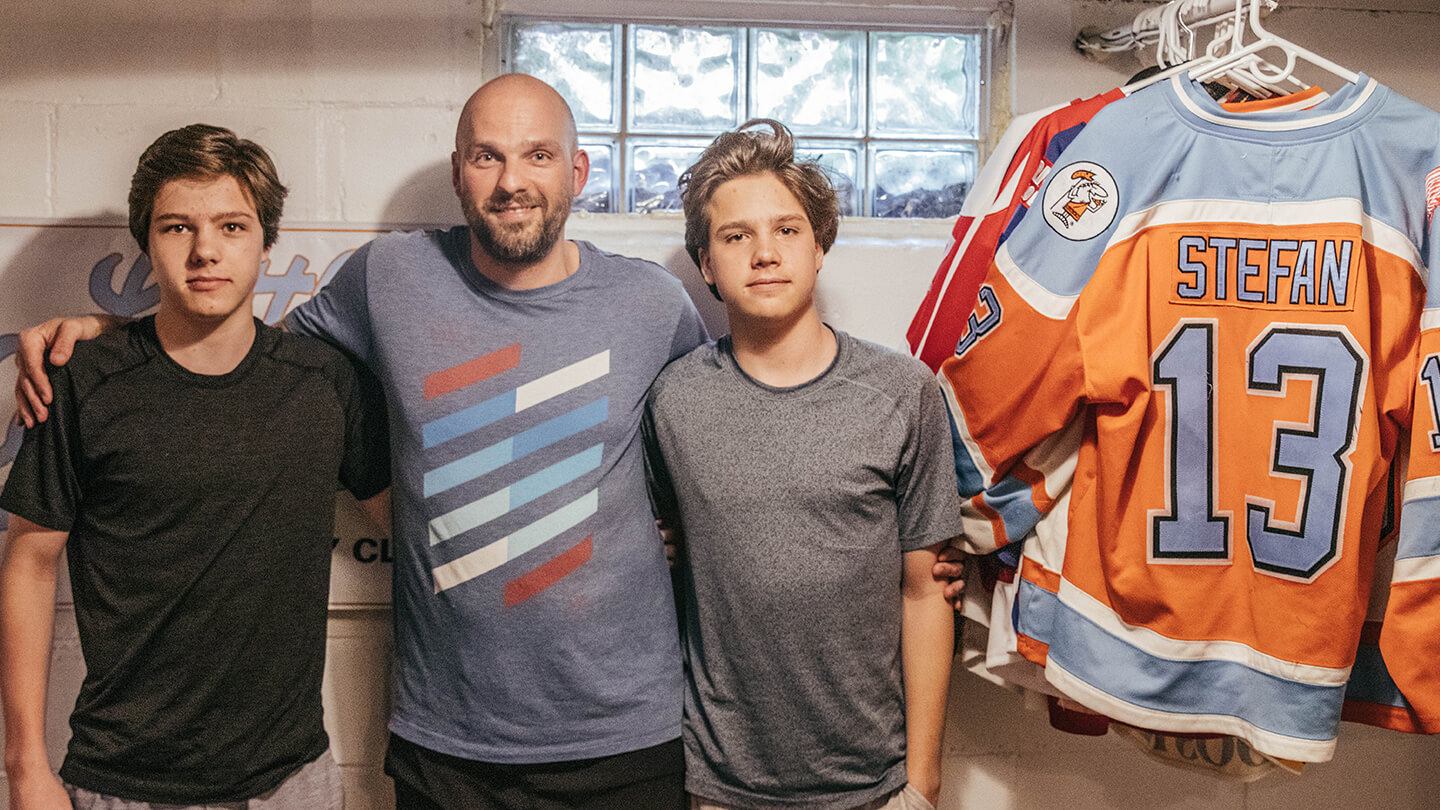
Hank, the Stefans’ fox-coloured canine, never settles for long in one place, moving from here to there, inside and out, before finally curling up on the end of James’s bed. It’s a strategic move because that perch offers a view to the laneway, allowing Hank to know the precise second Carolyn arrives home. The house in Birmingham actually won’t be home much longer, as the “For Sale” sign out front indicates. The Stefans originally moved to Michigan from California a couple years ago because its central location is good for Patrik’s business and the area offered a bevy of high-level youth hockey options. Both boys joined the Little Caesars AAA program and after coaching James for the better part of a decade, Stefan is heading west with him next fall to help ease the transition to the Portland Winterhawks of the Western Hockey League. The plan is for Patrik to essentially billet James and another player he’s coached for many years, Jack O’Brien, while Carolyn and Wyatt remain in Michigan, sliding into the O’Brien home. (Jack’s mom, Karen, is a partner in Stefan’s agency and the families have become intertwined over time.)
James led Little Caesars — which also featured defenceman Luke Hughes, younger brother of Vancouver Canuck Quinn Hughes and the most recent first-overall pick, New Jersey Devil Jack Hughes — in scoring, playing the same centre position his dad did. The way things are tracking, he’ll garner significant NHL interest over the next two seasons, meaning Stefan will almost certainly find himself back at the draft in 2021. “I don’t [think] that far [ahead],” he says.
That one-day-at-a-time approach is very much something Stefan stresses with everyone in his orbit. “Stay on an even keel” may be the emotional equivalent of “get pucks deep” in terms of hockey clichés, but Stefan remembers the inevitable flip side to the many highs he experienced. “Then you get low,” he says. “And you’re really low and the gap is so big.”
Stefan — who tries not to smother the boys with hockey but sometimes finds himself telling them to cut the Fortnite and come watch the game — is happy James will have a new coach with a different voice next year, and he’s looking forward to kind of just being Dad. His son, however, still expects Stefan to wear a couple hats. “Obviously there’s going to be some pointers thrown around the house,” James says. “It’s going to be a really big change, but I think I’ll like it.”
This was supposed to be the time in life when Stefan transitioned from playing to the next chapter. If you want to put a positive spin on it, his relatively brief NHL career simply gave him a head start on finding another calling. “I don’t want to say powerful, but it’s been lots of great feelings for me,” Stefan says of guiding the younger generation. “That’s almost a way bigger thing than when I was playing.”
That makes living in the moment — regardless of what people want to bring up from the past — a very easy goal.
Designed by Sasha Barkans. Edited by John Grigg.




